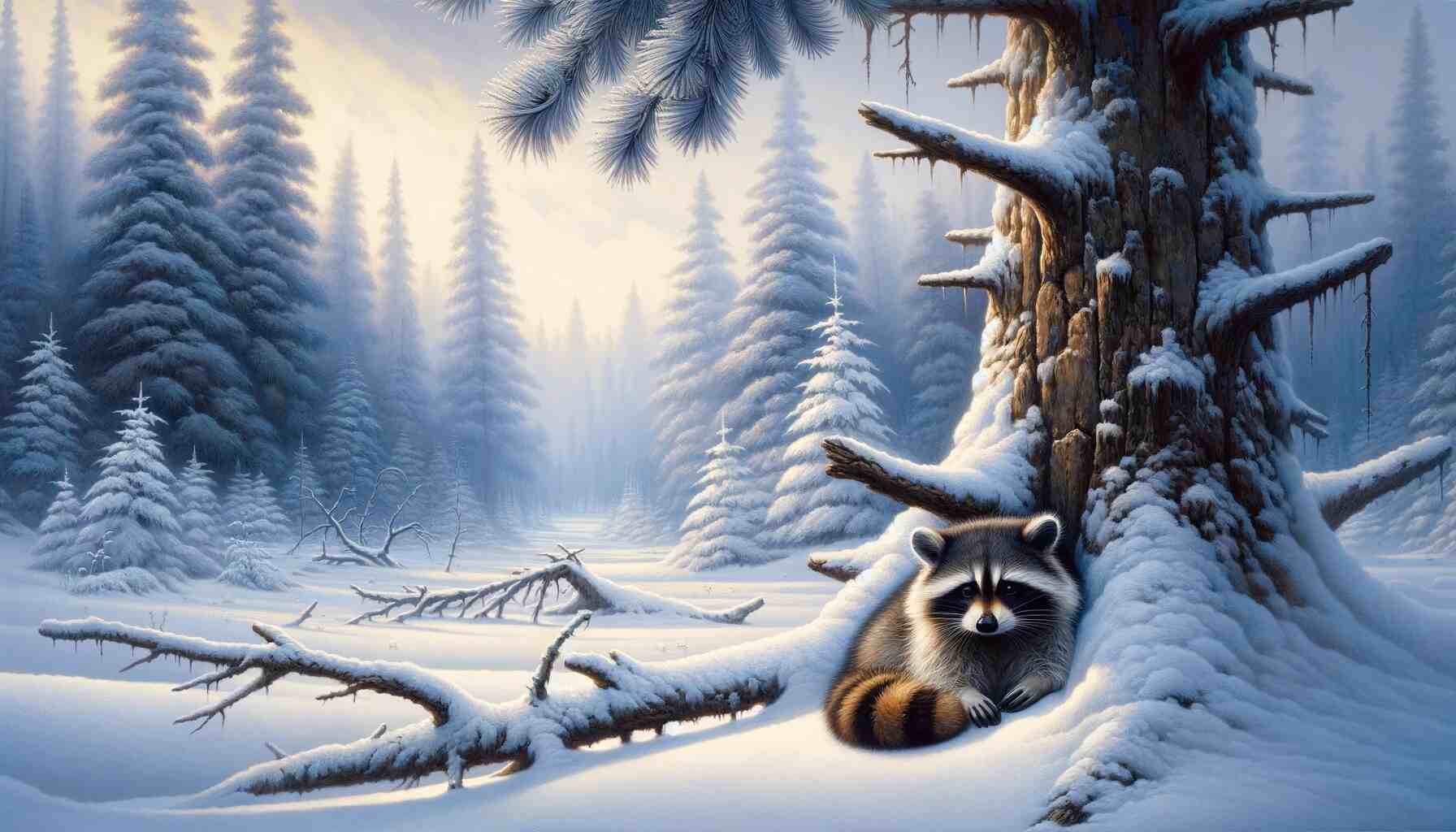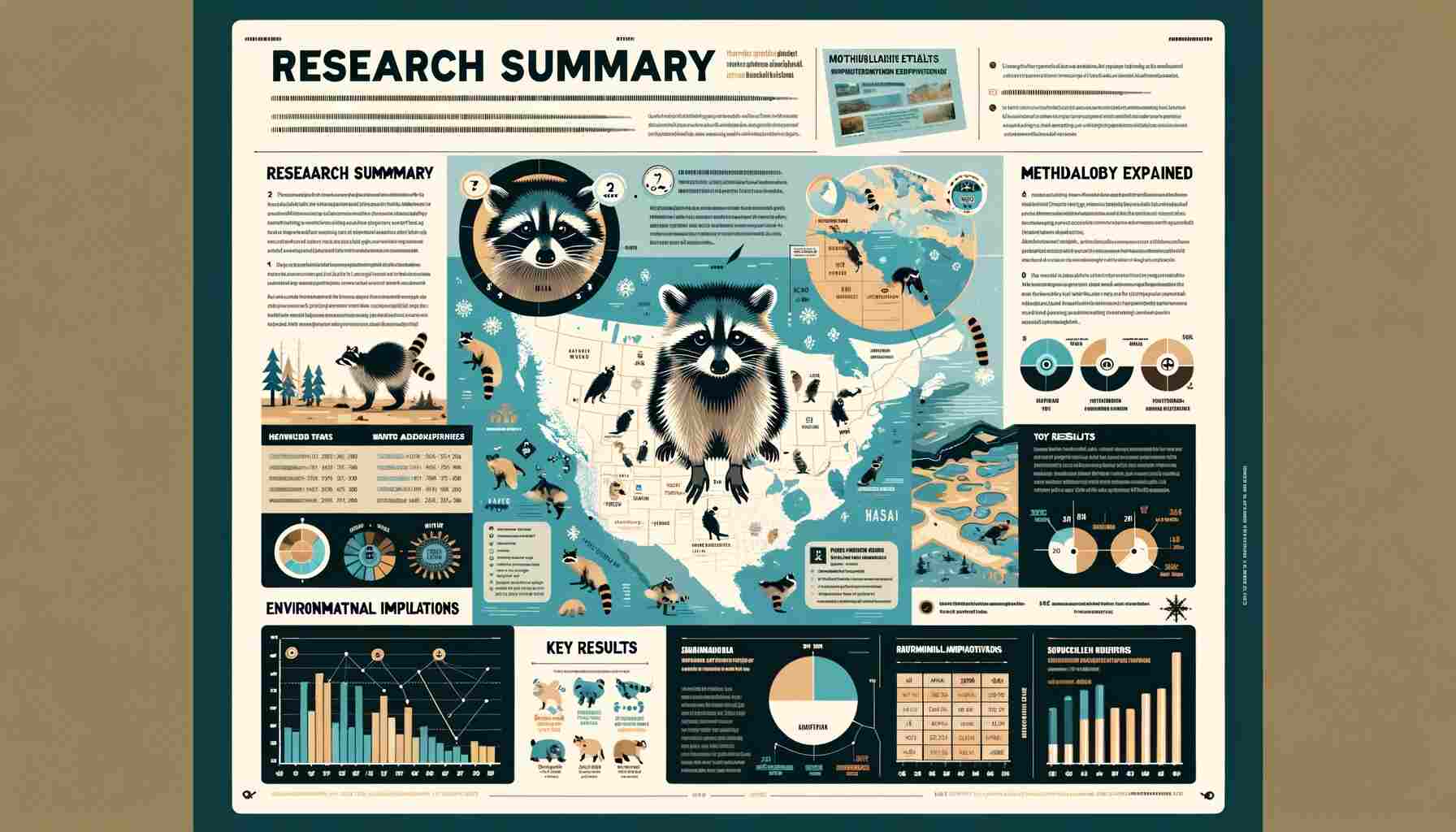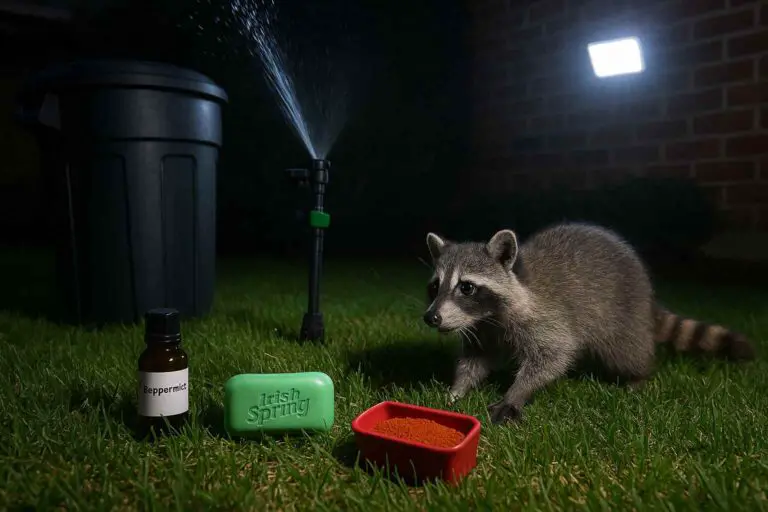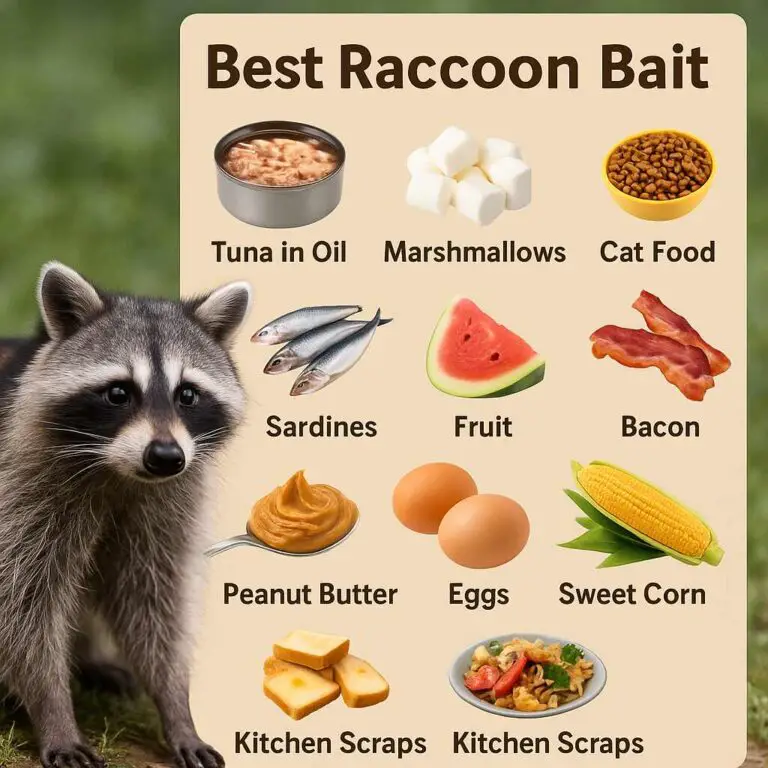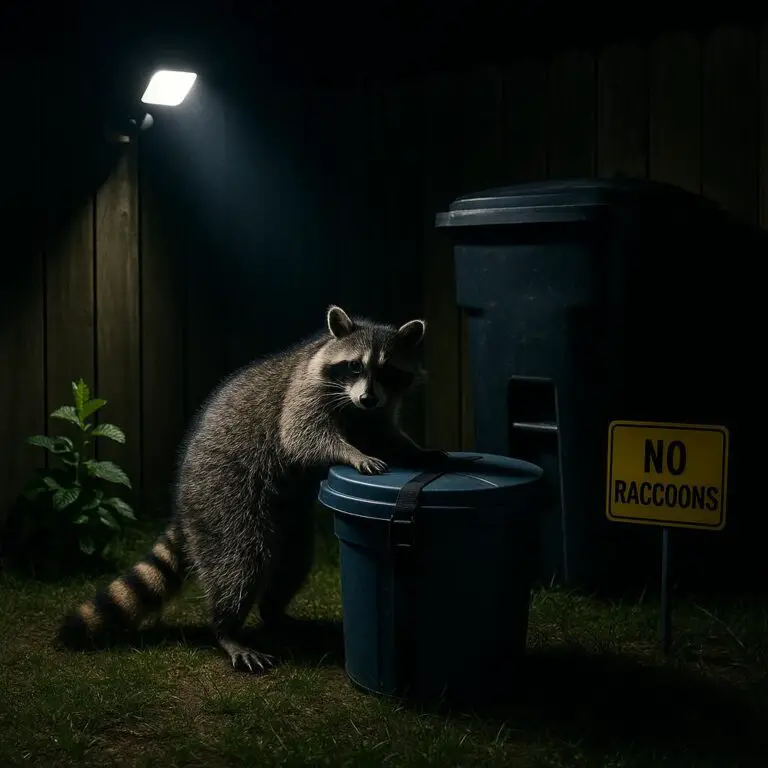Winter is a challenging time for wildlife, and raccoons are no exception. These charismatic creatures are known for their adaptability, but can they truly withstand the harsh winter conditions without succumbing to the cold?
Raccoons’ thick fur and ability to enter torpor help them survive winter, making it unlikely for them to freeze to death. However, their survival depends on factors like health, food, and shelter Which we will discuss in this article.
Raccoons’ Winter Challenges
Raccoons face a series of formidable challenges during the winter season. One of the most significant hurdles is the unforgiving weather. With temperatures dropping below freezing, icy winds, and snowfall, raccoons must find ways to keep warm. Additionally, the scarcity of food becomes a pressing concern as many of their preferred food sources become scarce or hibernate.
Biological and Behavioral Adaptations
Torpor: The Winter Survival Mechanism
Raccoons employ a remarkable physiological adaptation known as torpor to combat the cold. Torpor is a state of decreased metabolic activity that allows raccoons to conserve energy during extreme cold spells. While not true hibernators, raccoons can enter periods of torpor, during which their body temperature drops, and they become less active. This helps them survive the harshest winter conditions without expending too much energy.
Insulation Through Fur
Another key to raccoons’ winter survival is their thick fur. Their fur acts as a natural insulator, providing essential warmth and protection against cold temperatures. Raccoons have a dense underfur that traps heat close to their bodies, keeping them cozy in the chilliest of winters.
Body Temperature Regulation in Raccoons
Raccoons are masters at maintaining their body temperature, a crucial skill for surviving frigid winters. Here’s an in-depth look at how they regulate their internal temperature:
- Fur Fluffing: Raccoons have thick, insulating fur coats that they can fluff up when exposed to cold weather. This traps a layer of air close to their skin, creating an additional insulating barrier against the cold.
- Limb Tucking: In extremely cold conditions, raccoons tuck their limbs close to their bodies to reduce the surface area exposed to the cold air, helping to preserve their body heat.
- Metabolic Adjustments: Raccoons slow down their metabolic processes during winter, including their heart rate and breathing rate, to conserve energy. This enables them to endure extended periods of cold without frequent meals.
Effects of Extreme Cold on Raccoons
Understanding the potential effects of extreme cold on raccoons provides a more holistic view of their winter survival:
Hypothermia
Hypothermia is a significant risk for raccoons exposed to extreme cold. It occurs when their body temperature drops below the usual level, leading to a range of serious symptoms, including shivering, lethargy, disorientation, and unconsciousness.
Responses to Extreme Cold
Raccoons have evolved several strategies to cope with extreme cold and prevent hypothermia, including:
- Thick Fur: Their dense fur coat acts as a natural insulator, helping to retain body heat and protect them from cold temperatures.
- Huddling: Raccoons are known to huddle together, especially in communal dens, to share body heat and maintain warmth collectively.
- Seeking Shelter: When temperatures drop drastically, raccoons actively seek shelter in dens, hollow trees, crevices, or man-made structures like attics to escape the cold.
- Torpor: In the face of extremely harsh conditions, raccoons may enter a state of torpor, where their metabolic rate decreases significantly. This helps them conserve energy and endure extended periods without food.
Diet and Food Storage in Winter
To endure the winter, raccoons follow a strategy of building fat reserves. As their natural food sources dwindle, raccoons turn to a more varied diet, including berries, nuts, and even carrion. They engage in a practice known as “scatter hoarding,” where they hide food at various locations. This allows them to have a steady supply of nourishment when food becomes scarce, all while conserving energy.
Denning Behavior and Shelter
Raccoons are resourceful when it comes to finding shelter during winter. They use various types of dens, both natural and man-made, to escape the cold. Hollow trees, rock crevices, and abandoned burrows are common choices. Proximity to food sources is a critical factor in den selection.
Myths vs. Facts
There are several myths surrounding raccoons in winter, and it’s essential to separate fact from fiction. One common misconception is that raccoons hibernate like bears. However, as previously mentioned, they enter periods of torpor but do not hibernate in the traditional sense.
Another myth is that raccoons are solely nocturnal. While they are more active at night, they are not strictly nocturnal and can be seen during the day, especially when searching for food.
Myth |
Fact |
|---|---|
| Raccoons Freeze to Death Easily in Winter | Raccoons have remarkable adaptations, including thick fur and torpor, allowing them to survive extreme cold. |
| Raccoons Hibernate Like Bears in Winter | Raccoons don’t hibernate but enter periods of torpor. They remain active throughout the year. |
| Raccoons Are Strictly Nocturnal | While more active at night, raccoons are not strictly nocturnal and can be seen during the day. |
| Raccoons Should Be Kept as Pets for Winter | Raccoons are wild animals and should not be kept as pets. Their natural behaviors and needs are best suited for the wild. |
| Raccoons Prefer Urban Areas in Winter | Raccoons adapt to urban environments due to habitat loss. Their presence in cities is a result of necessity, not preference. Understanding their needs is vital for coexistence. |
Case Studies and Research on Raccoon Survival
Numerous studies and historical data provide insights into raccoons’ adaptability and survival rates in winter conditions. Research has shown that raccoons have a remarkable ability to endure extreme cold and scarcity of food. Their survival strategies, including torpor and food hoarding, have been well-documented.
A study conducted in the prairie parkland region of southwestern Manitoba, at the northern edge of raccoons’ distribution, investigated how these animals cope with winter challenges. This region, characterized by an intensively cultivated landscape with small grain and oil crops, grassland sites, wetlands, and small wooded bluffs, presents a challenging environment for raccoons due to its cold temperatures and variable landscape.
The study involved capturing, tagging, and tracking 114 raccoons to understand their survival patterns, particularly focusing on how sex and age impact their winter survival. This research was significant in understanding the specific challenges raccoons face during winter, including the impact of body condition on their survival. It was observed that yearling raccoons, which must allocate energy to both growth and fat deposits for winter dormancy, might have lower body condition estimates compared to adults.
The research highlighted raccoons’ adaptability and resilience in harsh winter conditions. Their survival in these conditions provides a window into the broader patterns of mammalian adaptation to challenging environments. This study and others like it contribute to our understanding of wildlife survival strategies and the importance of preserving natural habitats for these species.
For more detailed information and insights from the study, you can visit the original article on BioOne.
How Raccoons Compare to Other Winter-Adapting Mammals
Comparing the winter survival strategies of raccoons with other mammals in similar climates can provide insightful ecological context and highlight the unique and shared adaptations among different species.
Raccoons vs. Squirrels
Both raccoons and squirrels are versatile, omnivorous creatures that call both urban and wilderness settings home. However, when it comes to facing the winter chill, their strategies diverge. Squirrels, especially those dwelling in colder regions, have a habit of stashing away food reserves in preparation for the harsh winter months. They might also spend extended periods nestled in their nests or dens during extreme cold. In contrast, raccoons don’t rely on food hoarding to the same degree. Instead, they count on their knack for locating food sources throughout the winter, occasionally entering a state of torpor during exceptionally frigid spells.
Raccoons vs. Bears
Bears are renowned for their hibernation habits during the winter. Unlike raccoons, which experience shorter torpid periods, bears enter a profound state of slumber and abstain from eating, drinking, urinating, or defecating. Meanwhile, raccoons remain moderately active throughout the winter, continuing their quest for nourishment.
Raccoons vs. Deer
Deer, much like raccoons, grapple with food scarcity in winter. Their adaptation involves slowing down their metabolism and adjusting their diet to whatever sustenance they can find, including woody plants. Raccoons, on the other hand, display broader diet flexibility, feasting on a wider range of foods, including those accessible in urban areas.
Raccoons vs. Foxes
Foxes, akin to raccoons, possess the adaptability to survive in various environments, including urban settings. Both creatures boast dense winter fur for insulation, but foxes typically maintain a more consistent diet consisting of small mammals, unlike raccoons, which exhibit a higher level of opportunistic feeding.
Raccoons vs. Rabbits
Rabbits cope with winter by altering their diet and consuming more woody plant materials. Unlike raccoons, rabbits don’t possess the same degree of dietary adaptability and don’t go into states of torpor.
Raccoons vs. Birds
While not classified as mammals, birds’ winter survival strategies provide an intriguing contrast. Many bird species migrate to warmer climates, a stark contrast to raccoons, which opt to stay in one area and adapt to the changing conditions.
Human-Wildlife Interactions and Conservation
Human activities play a significant role in either supporting or hindering raccoons’ winter survival. Habitat destruction, pollution, and increased urbanization can disrupt raccoon populations. However, responsible actions such as not feeding them directly and preserving natural habitats can contribute to their well-being.
Tips for Helping Raccoons
If you’re concerned about raccoons during the winter, there are responsible ways to provide indirect assistance. These include ensuring your trash cans are secure to prevent raccoon scavenging, avoiding feeding them human food, and preserving natural habitats in your area.
FAQs
Here’s a list of frequently asked questions (FAQs) related to raccoons’ winter survival, along with their answers. These FAQs provide additional information about raccoons’ winter behavior and address questions that may not have been explicitly covered in the article.
Q1: Do raccoons migrate to warmer regions during winter?
Answer: No, raccoons are generally non-migratory animals. They stay within or near their home range throughout the year and adapt to winter conditions.
Q2: How do raccoons deal with frozen water sources in winter?
Answer: Raccoons are resourceful and will seek alternative water sources, such as melted snow or unfrozen streams, to stay hydrated when their usual water sources freeze.
Q3: Are raccoons more susceptible to diseases during winter?
Answer: Raccoons can be at risk of diseases like distemper and parasites during winter, but this risk is not specific to the season. Maintaining overall health and avoiding contact with sick raccoons is essential.
Q4: Can raccoons be active during extremely cold days?
Answer: While raccoons are adapted for winter survival, extreme cold can limit their activity. During severe weather, they may stay in their dens for extended periods to conserve energy.
Q5: How do raccoons cope with urban environments in winter?
Answer: Raccoons adapt to urban areas during winter as a result of habitat loss. They may find shelter in attics, crawl spaces, or other man-made structures, seeking warmth and food.
Q6: Are there any legal regulations for feeding raccoons in winter?
Answer: Feeding raccoons, especially in urban areas, may be subject to local regulations. It’s essential to check local wildlife and nuisance animal laws to ensure compliance.
Q7: Do raccoons have predators during winter, and how do they avoid them?
Answer: Raccoons have various predators, including coyotes and owls. They use their intelligence, agility, and nocturnal behavior to evade predators and find secure shelter.
Conclusion
In conclusion, raccoons are indeed resourceful creatures that have evolved various biological and behavioral adaptations to thrive during the challenging winter months. While they face numerous obstacles, including harsh weather conditions and food scarcity, their ability to enter torpor, their insulating fur, and their clever food storage strategies all contribute to their resilience.
Understanding the intricacies of raccoons’ winter survival, from body temperature regulation to responses to extreme cold, highlights the remarkable adaptability of these creatures. It’s a testament to their ability to navigate the challenges of winter with finesse.
As we navigate the winter season alongside these fascinating creatures, let us appreciate their ability to adapt and survive in the face of adversity. By understanding and respecting raccoons and their natural habitat, we can ensure that they continue to be a part of our ecosystem for generations to come.

